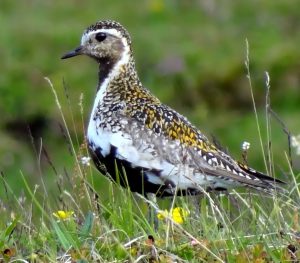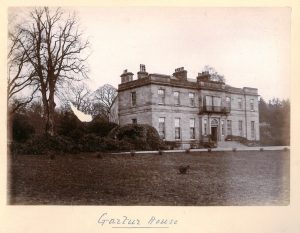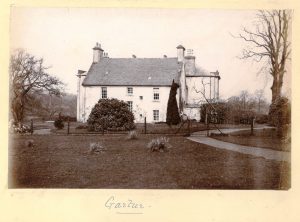Viola’s previous diary entry was in February. We now jump forward to May for her next, where she describes a plover’s efforts to move on a pheasant.
Viola does not describe the plover’s appearance so we do not know which species it is, but it was likely a Golden Plover. Today, the Golden Plover is included on the Scottish Biodiversity List. This list was approved by Scottish Ministers and consists of species selected to be of ‘principal importance for biodiversity conservation in Scotland.’
Golden Plovers are wading birds and their shorter bills and pointed wings are some of their distinguishing features. Viola thinks the plover may have been protecting its young. This may well have been the case. A pair of Golden Plovers would likely have made the nest in open ground where they get good sight of predators. The female will lay her eggs in April/May. However, their chicks can walk as soon as they hatch which allows their parents to move them to somewhere less exposed.
Viola spots these birds on Gartur Hill. Although no hills by this name appears on OS maps of the time, it is presumably a hill near Gartur. Gartur was another estate between Touch and Cambusbarron. Its mansion house, originally built for the Murray of Polmaise family, is now on the Buildings At Risk Register for Scotland. Stirling Council Archives holds some photographs taken of the houses at Gartur in the late 19th century (A1490). These photographs and Viola’s nature diary are available to view in our searchroom in Stirling.
Transcript
Gartur Hill. May 3. 12.00 noon
Saw a pheasant alight in a field. A plover promptly
got up and circled round the pheasant swooping
down and hitting it on the tail It gradually
got it right up the hill and out of the field
I suppose there must have been young near.



